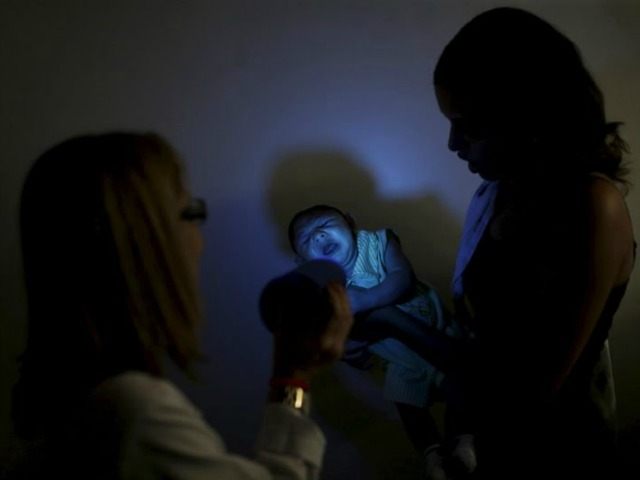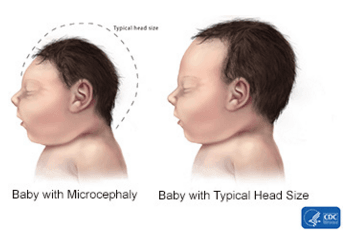Yale University School of Public Health Professor Albert Ko claims the cases of microcephaly in Brazil are just the start of concerns about birth defects linked to the Zika virus.
“It seems like microcephaly may just be the tip of the iceberg,” he stressed, adding:
The preliminary evidence is that [some] babies who don’t have microcephaly may also have neurological lesions or birth defects that are not as obvious as microcephaly. We’re really concerned because of Zika, but we need to rule out other causes of congenital infection to really make sure.
Ko spent the month of December at three maternity hospitals in Salvador, Brazil, examining babies with and without microcephaly. Experts are working to understand a possible link between the Zika virus and the birth defect, which occurs when the brain does not form properly during pregnancy or after birth and causes a small head. Children can suffer from seizures, developmental delays, intellectual disability, and feeding problems.
The CDC stated the disorder is typically uncommon. Following the Zika outbreak, however, Brazil has documented over 4,000 cases and is diagnosing an average of 200 cases a week. In 2015, the country tracked over 2,400 cases, compared to the 147 in 2014.
Microcephaly has received the most attention, but Ko found other problems with the infants.
“We’re seeing a spectrum. Many have fairly severe central nervous system lesions,” he explained. “There are also a lot of calcium deposits. … Those can cause seizures and cause impairment in terms of function for the brain.”
He added, “We’re also seeing that in some babies, the brains, which usually have wrinkles, are actually smooth. That’s a sign that development of the brain has been impaired. Several of them are also impaired with respect to vision and hearing.”
Ko also said the scientists believe Zika caused the microcephaly cases, but they need to rule out other possible causes.
“We have identified both stillbirths and live births,” he said. “We have identified 100 live births. But not all of those [cases] may be caused by Zika. We are trying to rule out other common causes, such as prematurity and congenital infections, including toxoplasmosis.”
The CDC listed rubella, cytomegalovirus, severe malnutrition, alcohol, drugs, and toxic chemicals as other causes of microcephaly.
Scientists in Brazil are tracking a series of cases of eye damage in babies with microcephaly. Vision problems are often a consequence of the developmental disorder.
The journal JAMA Opthalmology reported on a study that took place in December 2015 at Roberto Santos General Hospital in Salvador, Brazil. Doctors examined 29 babies, all with microcephaly, focusing on the 58 eyes.
They found “ocular abnormalities in 17 eyes (29.3%) of 10 children (34.5%).” The doctors wrote:
Bilateral findings were found in 7 of 10 patients presenting with ocular lesions, the most common of which were focal pigment mottling of the retina and chorioretinal atrophy in 11 of the 17 eyes with abnormalities (64.7%), followed by optic nerve abnormalities in 8 eyes (47.1%), bilateral iris coloboma in 1 patient (2 eyes [11.8%]), and lens subluxation in 1 eye (5.9%).
“It is very difficult to measure visual function in a newborn baby,” said Dr. Lee Jampol, an ophthalmology professor. “We are concerned that these lesions are going to have an effect on vision as the babies get older. There is a lot of testing that [has] not been done yet.”

The right eye has a superotemporal perimacular chorioretinal scar with perilesional pigmentary mottling (A), and the left eye has similar findings (B).
Fear of microcephaly or other complications due to Zika have pushed women to illegal abortions in Brazil. Doctors indicate women in all social classes are seeking out these abortions “in despair over the possibility of deformity.” Some even go through with abortions without concrete proof of complications. Doctors cannot diagnose microcephaly until the third trimester or after birth.
In Colombia, doctors have diagnosed 3,100 pregnant women with Zika, but none of the babies have microcephaly.


COMMENTS
Please let us know if you're having issues with commenting.